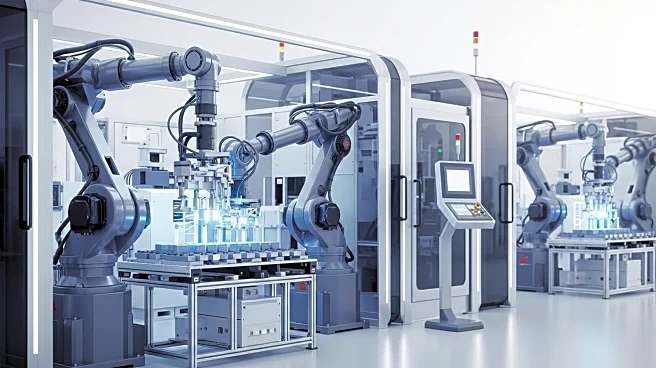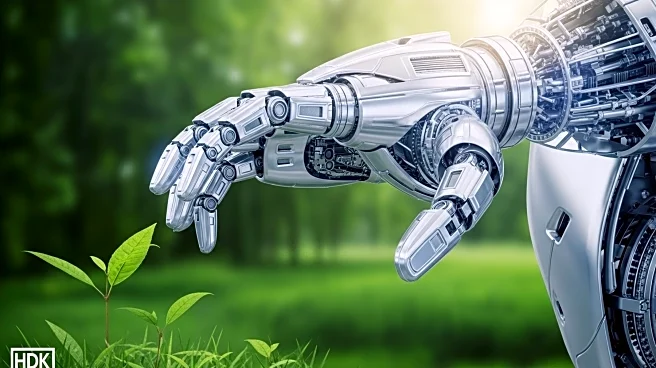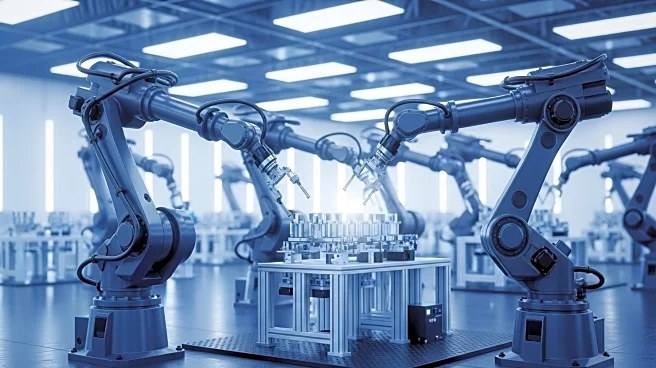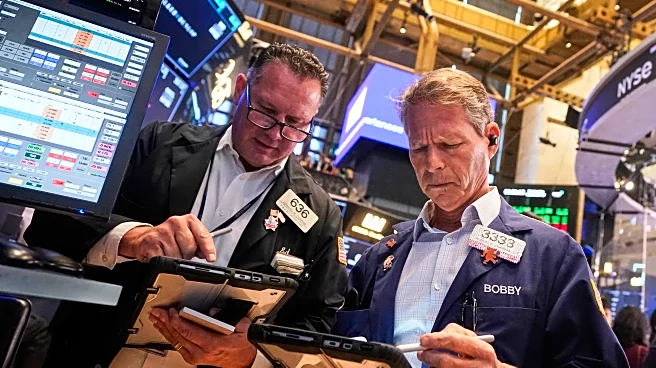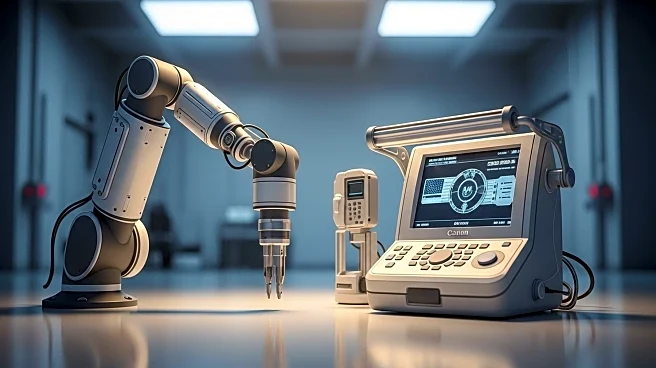What's Happening?
China has emerged as the global leader in industrial robot deployment, with over two million robots operating within the country, according to the International Federation of Robotics. In 2024, China accounted for 54% of all robotic installations worldwide, adding nearly 300,000 new robots. This growth is part of China's broader strategy to solidify its position as a manufacturing powerhouse, now responsible for nearly one-third of global manufacturing output. In contrast, the United States added only 34,000 industrial robots during the same period. The IFR projects continued growth in China's automation sector, driven by the introduction of robotics into new markets such as food and beverage, rubber and plastic, and textile production.
Why It's Important?
China's dominance in industrial robotics underscores its strategic focus on automation as a key driver of economic growth and manufacturing efficiency. This trend has significant implications for global manufacturing dynamics, as China's increasing output challenges traditional manufacturing leaders like the United States, Germany, and Japan. The rapid adoption of robotics in China could lead to shifts in global supply chains and competitive pressures on other nations to enhance their automation capabilities. Additionally, China's focus on integrating robotics into diverse sectors highlights the potential for automation to transform industries beyond traditional manufacturing.
Beyond the Headlines
The expansion of China's robotics industry is supported by a skilled workforce of electricians and programmers, highlighting the importance of human capital in technological advancement. This contrasts with the United States, where a shortage of skilled programmers poses challenges to automation adoption. The Trump administration's increased fees for H1-B visa applicants may further exacerbate this issue, potentially hindering the U.S.'s ability to compete in the global robotics market. Moreover, China's limited interest in humanoid robots, due to supply chain constraints, suggests a focus on practical applications of robotics rather than speculative technologies.

